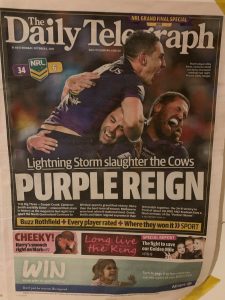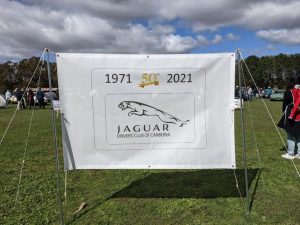Where to from here for the A-League?
By ALEX BELPERIO
THE financial difficulties of the Hyundai A-League continue to dominate headlines in the Australian football media. With new franchises struggling, is it time to stop competition expansion?
What has happened to the new franchises?
At the beginning of the 2009/2010 season, Football Federation Australia (FFA) welcomed two new franchises to the Hyundai A-League.
North Queensland Fury and Gold Coast United became the ninth and tenth teams in the league but their time has been full of financial turbulence and marketing struggles.
There are fears both could fold by the end of the season, with the Fury under the ownership of FFA and Gold Coast struggling to attract crowds.
The Fury came under FFA ownership after the former owner, Don Matheson, handed back his franchise license due to losing a reported $50,000 while in charge.
North Queensland had budgeted on an average crowd of 8,000 per home game but reached that figure only twice in its inaugural season.
Billionaire Gold Coast owner Clive Palmer has created outrage by capping the crowd for his club’s home games to 5,000.
That cap allows the club to open a small part of 27,000-seat Skilled Stadium, meaning big saving on expenses.
According to the mining magnate, had it not been in place against the Newcastle Jets on September 22, keeping the entire venue functioning would have set his club back $190,000 instead of the $30,000 lost.
Which other clubs have faced financial trouble?
It’s not just the new boys in trouble. Only a month ago the Jets were in deep financial strife, forcing the club to stop paying players and staff for more than two weeks.
They were only saved by Newcastle millionaire Nathan Tinkler, who has emerged as the club’s saviour, after the previous owner, Con Constantine, could no longer afford to fund his team.
Wellington Phoenix FC is also in trouble with threats of liquidation harassing the New Zealand-based club.
Its owner, Terry Serepisos, owes $1.4 million to the Wellington City council in rates and ground lease payments and has two weeks to settle the debt.
One of the nation’s most successful clubs, 2008 Asian Champions’ League runner-up Adelaide United, is also under FFA ownership.
The governing body took over from former Reds’ owner, Nick Bianco, on 8 May 2009 after his company, the Bianco Group, was hit by the global financial crisis.
Adelaide wasn’t in major financial distress, but became a new set of mouths to feed in the eyes of FFA.
United CEO Sam Ciccarello said although FFA simply provided funding and a parent figure over his staff, who are able to work daily as before, the lack of a private owner hurts.
“Without private owners and a commercial board in place, we are at a commercial disadvantage regarding sponsorship and business development opportunities,” he said.
“One of the roles that private owners and a dynamic board take on is to use their business and community networks to create commercial relationships between those contacts and the club.”
In a struggling competition, that commercial advantage and business development is crucial.
Should FFA stop trying to expand into new markets?
The struggling attempts to break new ground in Queensland, which already had the Brisbane Roar, raises the question – is market share achievable in other parts of the country?
The Sydney Rovers, looking to set its base in the city’s rugby-mad western suburbs, were awarded the twelfth A-League licence in September 2009, aiming to compete in 2011.
However, the A-League already features three teams from NSW, and although in Ciccarello’s opinion expansion is the way forward, securing the future of the existing clubs should remain FFA’s initial priority.
“The notion of expanding the A-League is not wrong but club owners need to focus on financially and organisationally strengthening the existing clubs and improving the overall viability and sustainability of the existing clubs before further expansion occurs.”
How can FFA make clubs viable?
If FFA does continue expanding into different areas it will surely spark a “quality v quantity” debate.
The proposed FFA knockout cup competition is a good way to promote the competition with more games, without providing start-up capital to help owners buy new teams.
Most professional leagues around the world have at least one knockout cup competition, with prize money usually a big incentive for clubs, while the finals-like atmosphere surrounding the fixtures attracts good crowds and creates high community interest.
At the very least more games create a more lucrative television deal with Fox Sports among other marketing and promotional opportunities.
“As the A-league grows, with more fixtures and therefore more content, the value of the content through the selling of broadcast and internet rights will significantly increase,” Ciccarello said.
“This will be the principal factor in increasing the dividend that the clubs receive from FFA from the sale of these rights, as well as the incremental effect on sponsorship values.
“It will be the major factor in reducing clubs’ average operating loss to a manageable level.”
What does the future hold for franchise hopefuls?
Naturally, there are other Australian cities aiming to become part of the competition, hoping they can be the successful new team and make money.
In Canberra’s case, Capital Football has collaborated with local investors in the hope of gaining the next A-League license handed out.
However, despite a strong local competition and good support for the Socceroos in Canberra – more than 20,000 saw the national team play on their last visit to the capital – the bidding party is struggling for funding.
“It’s not even at six million,” said Capital Football Chief Executive Heather Reid upon being asked how close her contingent was to the FFA’s franchise buy-in price of $8 million.
Reid is disappointed FFA has not yet given clear indication on the city’s place in their plans.
The Capital Football boss said FFA indicated even a team in the National Youth League was at least five years away.
That decision shows FFA understands the reason it is in the current situation.
Rather than open up to traditionally strong football areas like Canberra, the federation has tapped into markets it was always going to struggle to dominate.
For now, that means football-strong areas like Canberra and Wollongong, both part of some of the old league’s better times, miss out on local professional exposure.
Rather than following football culture, FFA has chosen populous non-football spots which have done nothing to help the development of a viable professional competition in Australia.
This is why expansion must now stop if the A-League is to avoid the same fate as the old National Soccer League, which expanded too quickly and made no money, eventually collapsing in 2004.
Worst of all, if the league doesn’t look like making major improvements by December, FIFA could look harshly upon FFA when deciding who will host the 2022 World Cup.



A-League – The financial difficulties « alexbelperio
Jul 21, 2011 at 4:55 pm[...] As seen on NowUC website – End of season 2010/2011. [...]